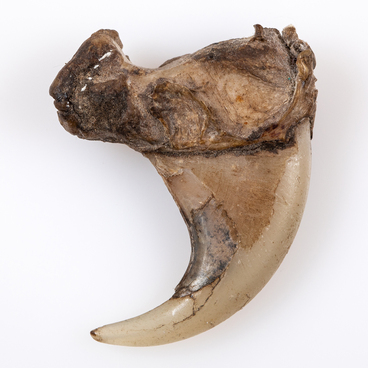The collection of the Sheltozero Veps Ethnographic Museum named after Rurik Petrovich Lonin features a churn-staff — a device used to mix, beat or shake a variety of liquids and mixtures. The churn-staff or “whorl” is made of pine and has five horns. The item was found in an abandoned old house in the village of Shondovichi, Podporozhye district, Leningrad region, during an expedition to the Middle Veps in 1993.
The churn-staff is a long stick with branches-hooks at one end. It was cut from a single pine or spruce branch. There was no need to cut down a young tree for this: often suitable material was found right underfoot. A stick only had to be cleaned of bark and resin, and then it was lightly polished so that the housewife would not accidentally drive a splinter into her finger.
The Veps prepared churn-staff once a year — on Maundy Thursday. Early in the morning, the head of the household or mistress went into the forest “without eating, without drinking, ” without talking to anyone, found pine trees and made churn-staffs. Several churn-staffs were usually made for a year. Using a churn-staff, a housewife beat the sour cream into butter and kneaded the dough. A dirty churn-staff could not be placed on the table, it had to be placed on a plate, because “the table is God’s palm.” Otherwise, according to popular belief, a mouse could get into the milk or a scandal could happen at home.
The churn-staff had to be of an odd number of horns — five or seven. The handle was measured with fist length. Special skill and patience were needed to churn (whip) butter from cream and sour cream. The handle was held between the palms and rotated. “There goes a goat, beating its horns on all sides, ” says an old riddle about a churn-staff. It beats and batters — that’s why the churn-staff was also called a beater. This object was compared to a goat because the churn-staff has horns — knots of cut spruce or pine branches. In these trees they grow around the trunk at the same level.
The churn-staff and the ladle took part in the Veps
wedding ceremony. During matchmaking, if the bride agreed to get married, she
would show the matchmakers a ladle; if she didn’t agree, she would show a
churn-staff. After this, the groom was teased “churn-staff, churn-staff.”


